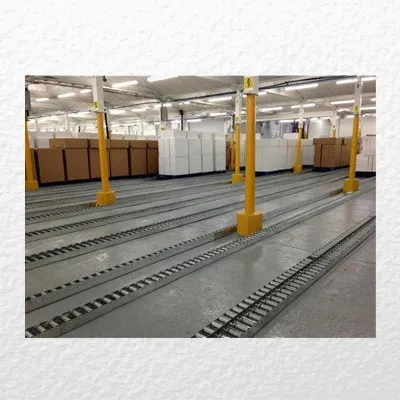Understanding the Function and Applications of Roller Track

Roller tracks are an important part of today’s industry and logistics. These are used in a variety of applications, including conveyor systems, loading docks, and warehouse storage. They provide the support needed to carry out operations safely and efficiently. But what exactly is a roller track? How does it work? And what makes it such an effective tool for both small businesses and large corporations? In this article, we will discuss the function and applications of roller tracks, exploring how they can help you with your logistical needs.
What are Roller Track?
Roller tracks, also known as conveyor tracks, are commonly used in a variety of industrial and commercial applications. It consist of a series of metal or plastic rollers that are connected together to form a continuous track. The rollers are typically spaced evenly apart and rotate freely on their axles.
Roller tracks can be used to move objects of all shapes and sizes, including heavy loads. They are often used in assembly lines and other production processes where items need to be moved from one workstation to another. It can also be used for storage and retrieval systems, as well as in material handling and logistics applications.
How do Roller Track Work?
Roller tracks are a type of conveyor system that use rollers to move goods or materials from one location to another. They are often used in warehouses and factories to move heavy or bulky items from one area to another. They can also be used in retail settings, such as grocery stores, to move shopping carts from the parking lot to the front of the store.
Roller tracks consist of a series of rollers that are mounted on a frame. The rollers are spaced evenly apart and rotate on an axle. The frame is typically made of steel or aluminum and can be either straight or curved. They can be powered by an electric motor or by gravity.
Roller tracks are versatile and can be customized to meet the specific needs of a particular application. For example, the spacing between the rollers can be adjusted to accommodate different-sized items. The rollers themselves can also be made of different materials, such as stainless steel or plastic, depending on what type of item will be transported on them.
One advantage of roller tracks is that they can handle very heavy loads. Another advantage is that they can be used to transport items over long distances. Additionally, roller tracks are relatively easy to install and maintain.
The Different Types of Roller Track
There are several different types of roller tracks, each designed for a specific purpose. The most common type is the gravity track, which uses the force of gravity to move objects down the track. This type of track is often used in warehouses and other storage facilities.
Another common type of roller track is the power-assisted track, which uses an electric motor to help move objects along the track. This type of track is often used in assembly lines and other industrial applications.
Finally, there are also special purpose tracks, such as those used for conveyor belts or ski lifts. These tracks typically have a more complex design than other types of tracks, and are built to withstand heavy use.
The Benefits of Roller Track
Roller tracks are a versatile and efficient way to move materials around a shop or warehouse. They can be used for a variety of applications, including moving heavy loads, transferring materials from one location to another, and assembling products. They can also be used to create workstations or conveyor lines.
There are many benefits to using roller tracks in a business setting. They are durable and can withstand heavy use. They are also low-maintenance, meaning they do not require regular cleaning or lubrication. Additionally, they are relatively inexpensive, making them a cost-effective solution for businesses.
Another benefit of roller tracks is that they can be easily customized to meet the specific needs of a business. For example, they can be outfitted with different types of rollers or casters to accommodate different loads or materials. Additionally, it can be installed on various types of surfaces, including concrete, asphalt, and tile.
Applications for Roller Track
Roller tracks are commonly used in a wide variety of applications, including:
-Conveyor systems
-Assembly lines
-Packaging and labeling stations
-Shipping and receiving areas
-Warehouses and distribution centers
Conclusion
Roller tracks are a versatile and efficient material handling system with many applications. They provide cost savings, increased safety, and improved productivity compared to manual labor. The ability of Roller Track Manufacturers customize in various sizes and configurations makes them perfect for use in industries such as manufacturing, warehousing, distribution centers, automotive assembly lines, retail stores and more.




